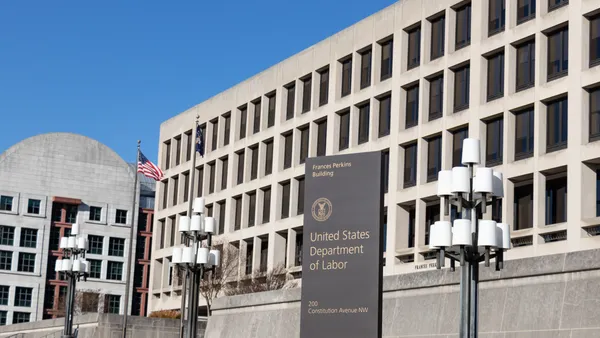In-house litigators, buckle up: You’re about to become much busier.
With three recent cases — Loper Bright Enterprises v. Raimondo, SEC v. Jarkesy and Corner Post v. Board of Governors — the Supreme Court significantly curtailed the powers of the Executive Branch’s regulatory apparatus.
The decisions also provided fresh impetus for corporations to challenge regulations in court, lawyers with experience in regulatory litigation told Legal Dive.
The Loper Bright decision ended 40 years of judicial deference to federal agencies; the Jarkesy decision calls into question the future of agencies’ in-house administrative law proceedings; and the Corner Post ruling effectively abolished the statute of limitations for plaintiffs to challenge agency regulations.
In her dissenting opinion in the Corner Post case, Justice Ketanji Brown Jackson predicted a “tsunami of lawsuits” will wash over federal courts as a result of the court’s rulings in that case and the Loper Bright decision three days earlier.
The Loper ruling offers a virtual invitation for in-house counsel to proceed to federal courts to ask judges to interpret regulations and the legislative intent underlying them. Writing for the majority, Chief Justice John Roberts said that federal courts are inherently suited to this role.
“There’s going to be a race to the court to get a finalized judicial review of what the law means,” said Varu Chilakamarri, a partner at K&L Gates and a former deputy assistant AG at the Justice Department’s civil division. “Courts will decide.”
This seismic shift in the continual fray between regulators and the industries they oversee also shifts power from the White House to courts, and will likely constrain the outsized political shifting that is common as agency leaderships change with administrations, said Randolph Elliott, a veteran Washington litigator and partner at McCarter & English.
As a result of Loper, the calculus for companies on whether to challenge regulators has changed, along with the path toward successful court outcomes, Elliott said.
“You’re going to see more and more of those in federal district courts and courts of appeals as they fight out these issues,” said Elliott, who handles energy and environmental regulatory cases. “The judges are now going to have to make the calls and independently apply tools of statutory construction, which the [Supreme] Court says is their bailiwick.”
“So now you can tell your client we’ve got to convince the judge the agency is wrong,” he said. “The chances are better and you’ll be able to use traditional legal arguments, I think, in some of these cases and less of the technical arguments.”
The Loper decision may restrain policy goals for a new president coming into office, he said.
Such philosophical shifts have become common among regulators based on whether the administration is Republican or Democratic. “There’s not as much opportunity for new administrations to come in and flip flop as there was before,” Chilakamarri said.
A regulatory body will “have to have a statutory basis” for seeking to change rules for industry and guide policy outcomes, Elliott said of regulators’ policy choices. “So it will restrain them as well. In the short term [Loper] is certainly going to steer agencies.”
In terms of the impacts to particular industries and agencies, Elliott said, the Court’s Jarkesy blow to administrative law proceedings may affect environmental, antitrust and labor policy most immediately.
The Environmental Protection Agency has assumed expansive authorities under the Clean Air Act to effect climate change policy goals, he said, and business may target those in district and appellate courts. The Federal Energy Regulatory Commission also polices natural gas markets with administrative law judges.
“The Jarkesy case is going to cut across every agency that uses ALJs, although the exact breadth of what it covers is unclear because it purports to cover not every enforcement action,” Elliott said.
The Federal Trade Commission and the National Labor Relations Board have also sought to exercise authority for policy goals set by the Biden administration, many of these by using administrative courts.
The rulings are likely to deter regulators from more aggressive interpretations of laws, given their limited ability to contest every case in federal courts, Elliott and Chilakamarri agreed.
“I think the agencies are just going to have to be much more circumspect in how they justify rules and interpretations when they adjudicate matters,” she said.











